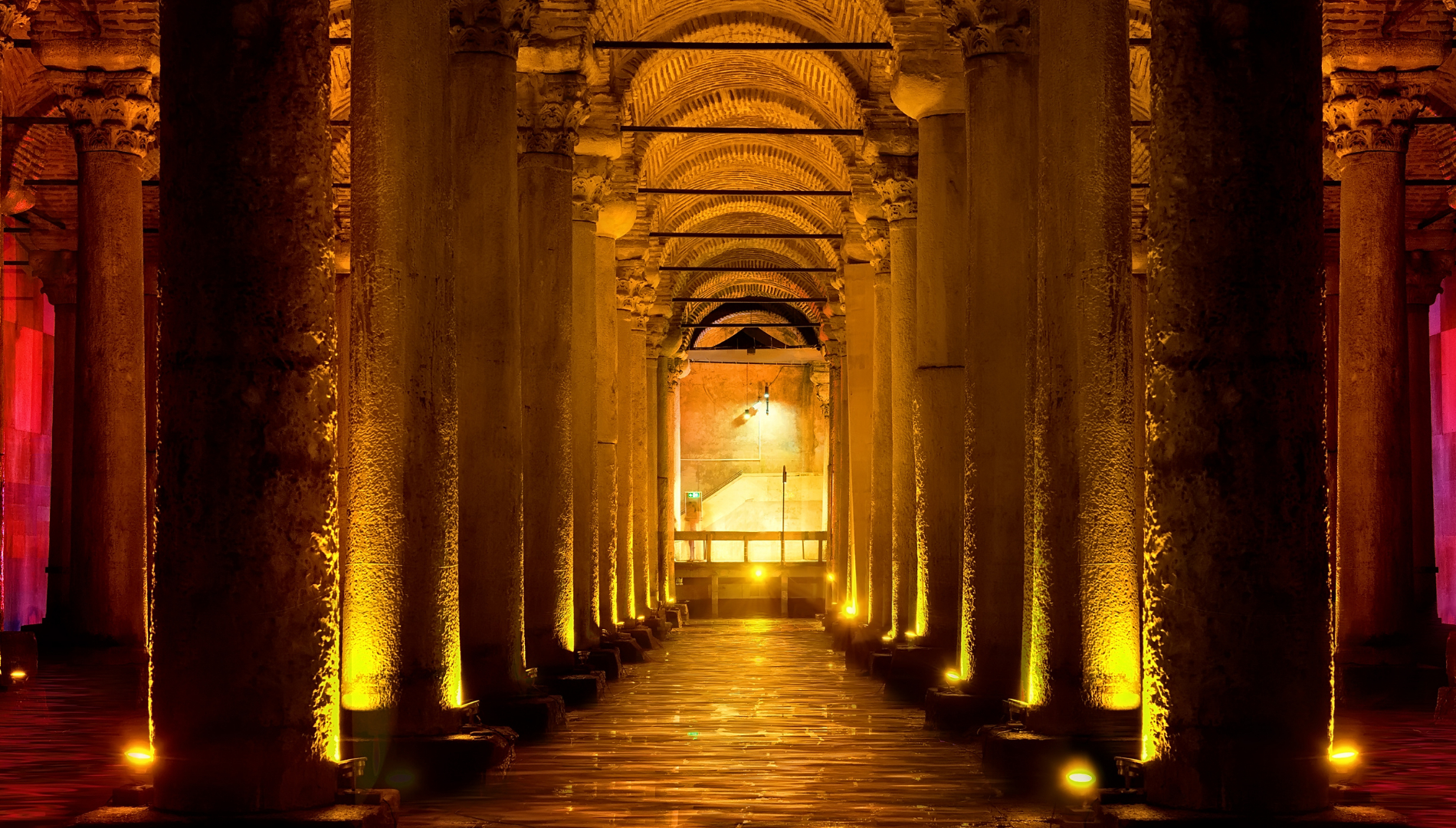Basilica Cistern is one of the most famous underground wonders in Istanbul. This is an underground water structure with a fascinating space that attracts many visitors.
Underground Palace
People often remember Istanbul as a city that spans two continents, with its mystical beauty and timeless cultural color. There are many places that people can visit if they have the opportunity to travel to Istanbul. Among them, Basilica Cistern is definitely the most favored name. The underground bunker is named Basilica Cistern based on the inspiration from Stoa Basilica Square right above.
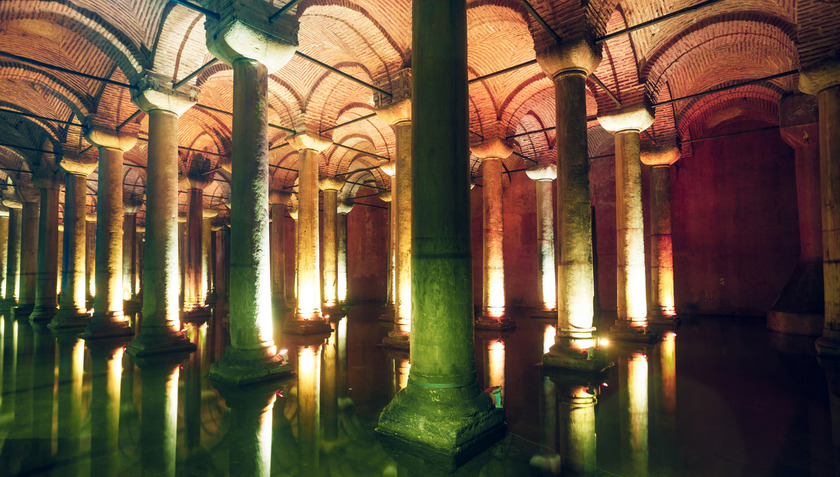
The 80,000m3 underground water tank is as beautiful as a palace and has existed for nearly 1,500 years under the ancient city.
The Basilica Cistern is an underground water structure, built in the 6th century under the reign of Byzantine Emperor Justinian I. The purpose of this construction was to provide water for the Imperial Palace and other important buildings in the city of Constantinople. At that time, this underground cistern had a capacity of up to 80,000 cubic meters of water.
When the city fell to the Ottoman Empire in 1453, the Basilica Cistern continued to be used but no longer played the most important role as it had originally. After that, the building fell into oblivion for various reasons.
It was not until the 16th century, when Petrus Gyllius, a Dutch explorer, discovered this underground tunnel. After that, this structure underwent many restorations, becoming a famous tourist destination in Türkiye, attracting a large number of visitors.

The project's purpose was to supply water to the palace and important items in Constantinople (ie Istanbul) of the Byzantine Empire.
The Basilica Cistern is one of Türkiye's most impressive architectural masterpieces. With hundreds of stone columns lined up neatly, reflecting on the clear blue water, this place creates a magical, romantic space, making visitors feel like they are lost in another world. Stepping in here, you will feel a strange tranquility. With each step, you seem to be discovering a new world, a mysterious and fascinating world.

When the city fell to the Ottoman Empire in the 15th century, the Basilica Cistern continued to be used but no longer played an important role, before falling into oblivion.
The total area of this structure is up to 9,800 square meters, with a capacity of up to 80,000 cubic meters of water at the same time. The massive pillar system, consisting of 336 stone pillars cast from polished marble. Each pillar is 8 meters high, arranged in a neat layout in 12 rows. In addition to the purpose of supporting the entire area of Basilica Cistern, the pillars are a clear demonstration of the sculpting talent and superior techniques of the ancients.

Basilica Cistern is known as the "water palace" or "sunken palace" thanks to its large space and magnificent architecture.
The soft light from the sparkling water, through the rows of towering stone pillars, creates a magical, shimmering space. Basilica Cistern is like a palace under the ocean, where light and darkness blend together, creating a magical beauty, making visitors amazed. With each step, visitors seem to be lost in another world, a world full of mystery and romance.
Architectural masterpiece of underground water tank in Istanbul
This underground water tank is famous for many unique and highly artistic architectural products. One of them is the unique Medusa head column at Basilica Cistern that everyone wants to admire.
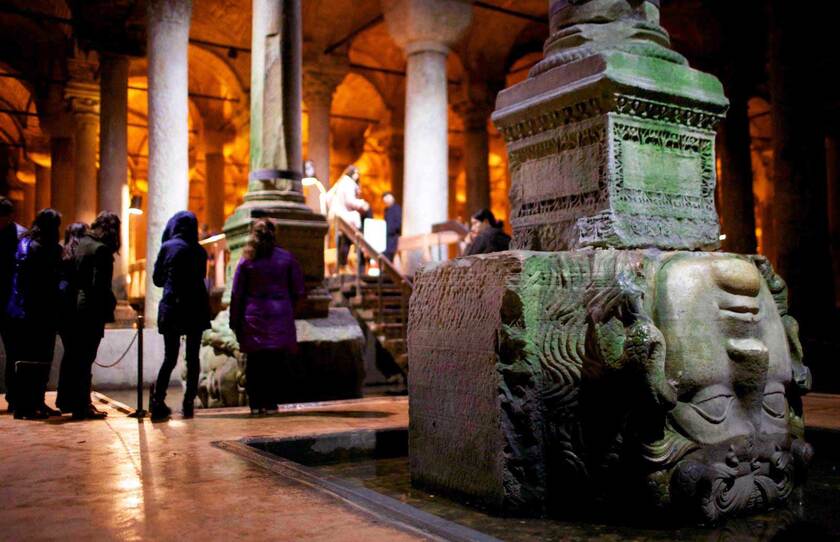
Basilica Cistern is not only an architectural heritage but also a fascinating historical structure in the heart of Istanbul.
Two pillars shaped like Medusa's head - a half-human, half-snake creature in Greek mythology with the ability to turn people into stone with just one look - are the highlight of the Basilica Cistern. The two statues add a mysterious, spiritual and impressive touch to the space.
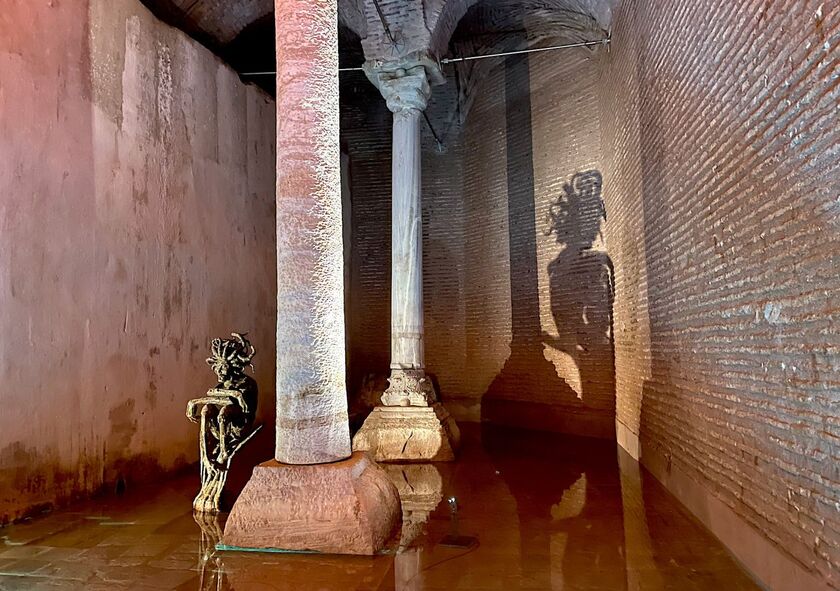
Impressive architecture in this "underground palace"
Arranged in the northwest of the cistern, one Medusa head is placed in a tilted position, the other upside down. In ancient architecture, the image of Medusa was often used to ward off evil spirits and protect the building. At the Basilica Cistern, two Medusa heads, with glaring eyes, like guardian deities, guard this architectural treasure. Therefore, many people believe that placing two Medusa columns here is to protect this entire monumental building from spiritual forces.
Many of the structures here also make people curious by their names, for example the extremely famous tear column. The reason for this name is because the surface of this column is always wet. More specifically, on the body of the column are carved sunken motifs of peacocks, the branches drooping down like tears, so the ancients named it like that.
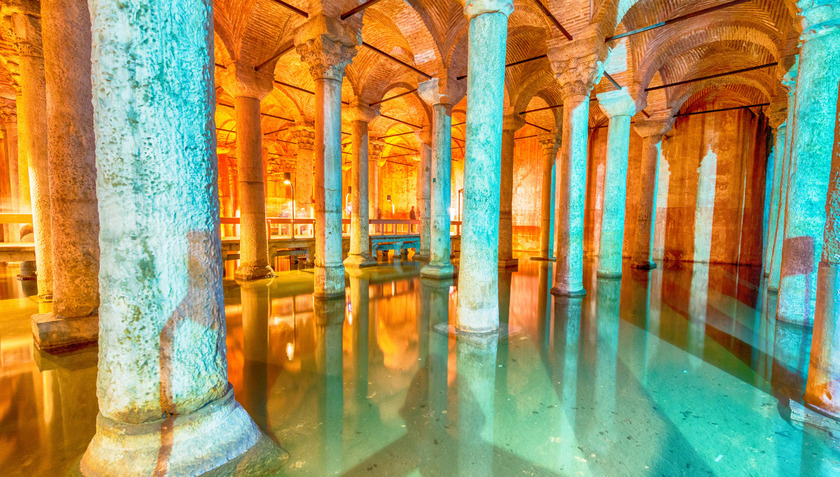
This special column is located in an area that is easily visible when coming to Basilica Cistern. According to legend, the column is a tribute and gratitude to the slaves who lost their lives during the construction of this structure. The tears on the column represent the tears of the people of the past, reminding them of their great but silent sacrifices to have a Basilica Cistern like today for everyone to admire.
The image of a peacock carved on the column symbolizes immortality. Meanwhile, the drooping branches represent sadness. This combination creates many layers of meaning associated with the story of life and death, the sacrifice of those who came before and the gratitude of those who remain.

There are many other architectures that cannot be missed when visiting here.
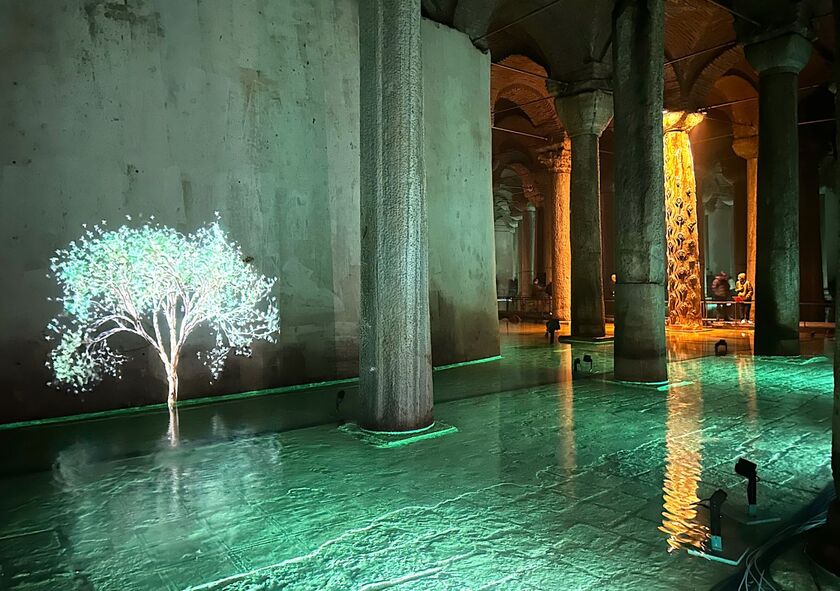
Basilica Cistern is a unique architectural work as well as a symbol of Istanbul's golden age. With its mysterious beauty, sophisticated architecture and profound cultural significance, Basilica Cistern deserves to be one of the must-see destinations when you set foot in the capital of Türkiye.





